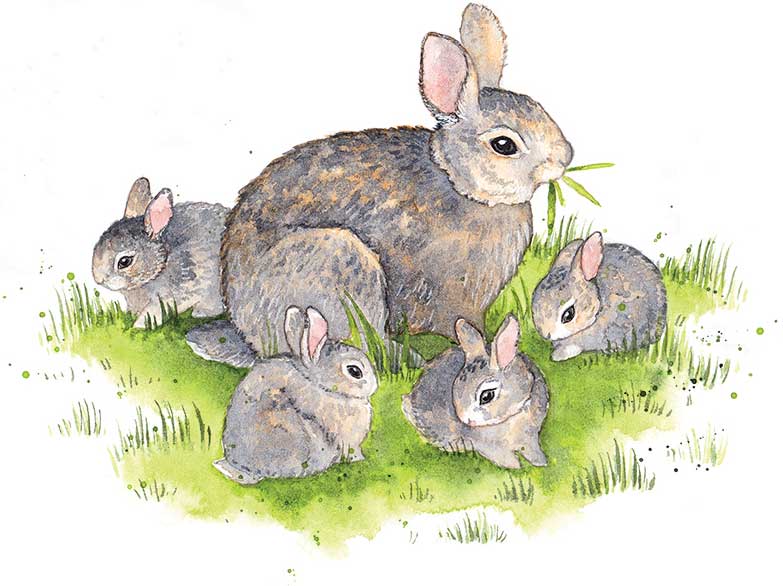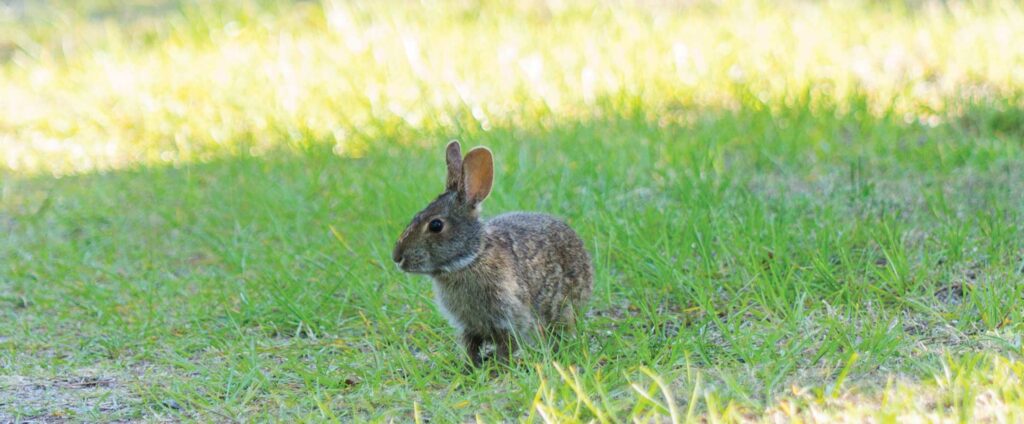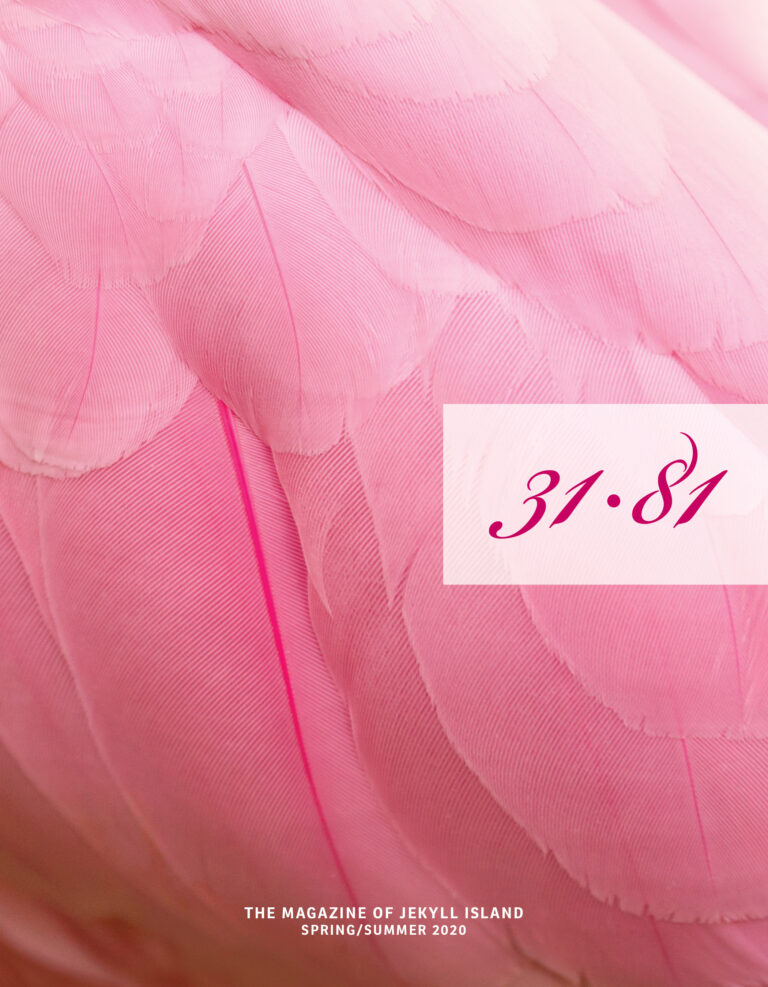These island cutie pies are fruitful by multiplying
By Candice Dyer
Marsh rabbits mate year-round, but they really hop to it during the spring, when you’re liable to see more than 100 of them along Jekyll Island’s causeway.
“You see fewer in the winter,” says Jekyll Island Authority wildlife biologist Joseph Colbert, “but in the spring, especially when times are good, after some good rains that get the grass growing, you will spot a lot of them.”
The rabbits’ fecundity is key to their survival. “Their life is built around avoiding predation,” Colbert says, “so their best defense is to breed as fast as they can.”
The females produce up to six litters a year—they have a gestation period of about a month—with an average annual production of 15 to 20 young. They conceal themselves in plush nests built from rushes, grasses, and leaves, and line them with hair from adult rabbits.
Marsh rabbits are popular in the animal kingdom. They constitute about 70 percent of the diet of bobcats and almost 100 percent of the diet of eastern diamondback rattlesnakes. “They’re very important prey,” Colbert says. They don’t so much ward off predators as avoid them, taking cover under dense vegetation. “You seldom see them out in the open.”

A fun fact: They can swim. “I lifted a tuft of grass once,” Colbert says, “and one exploded out of it and jumped in the creek, kicking its feet really fast and swimming to the other side.”
These rabbits—they are, scientifically speaking, lagomorphs—are smaller and sturdier than their cottontail cousins, but they should not be confused with the swamp rabbit of Alabama. The Jekyll Island rabbits have a coat that is typically a dark, rich brown, and they feed on dense, scrubby plant life.
Hunting is prohibited on Jekyll Island, but the rabbits’ meat reportedly is lean and tender, Colbert says. “Given how good they taste, and how much easier they are to catch than things that will bite back, you can’t blame predators for eating them.”



